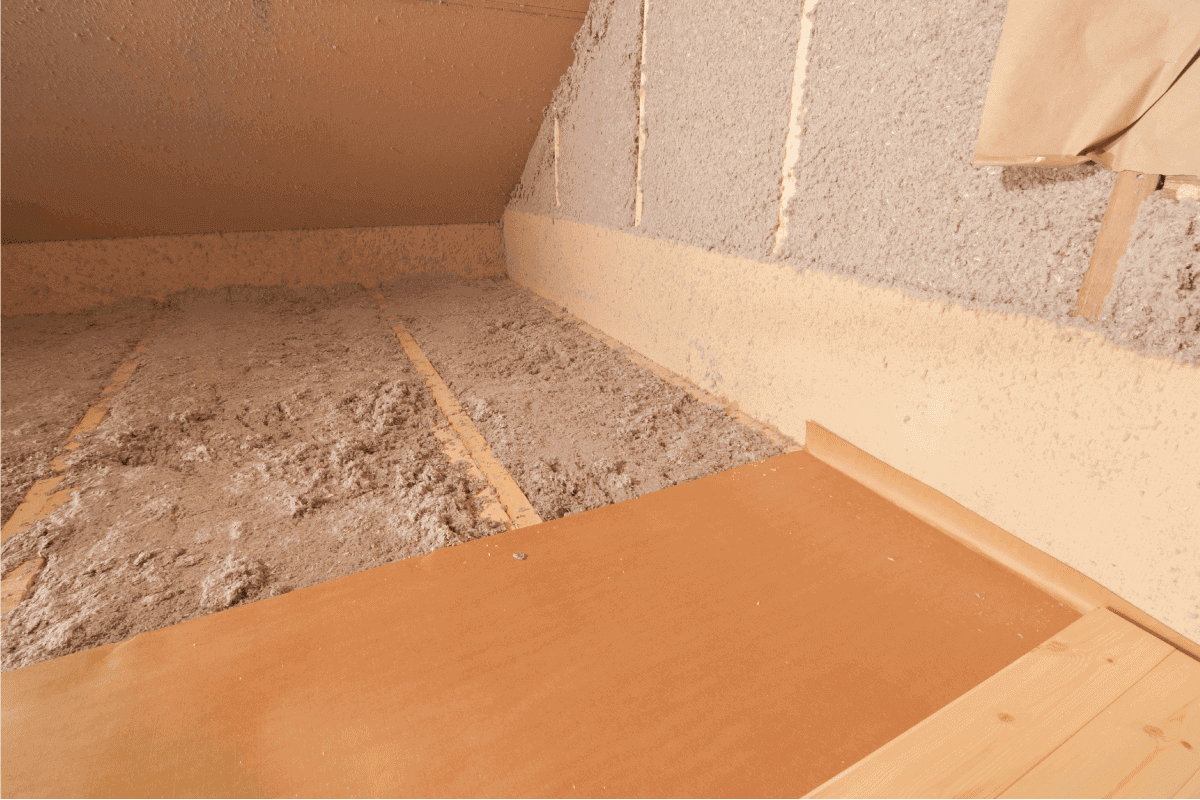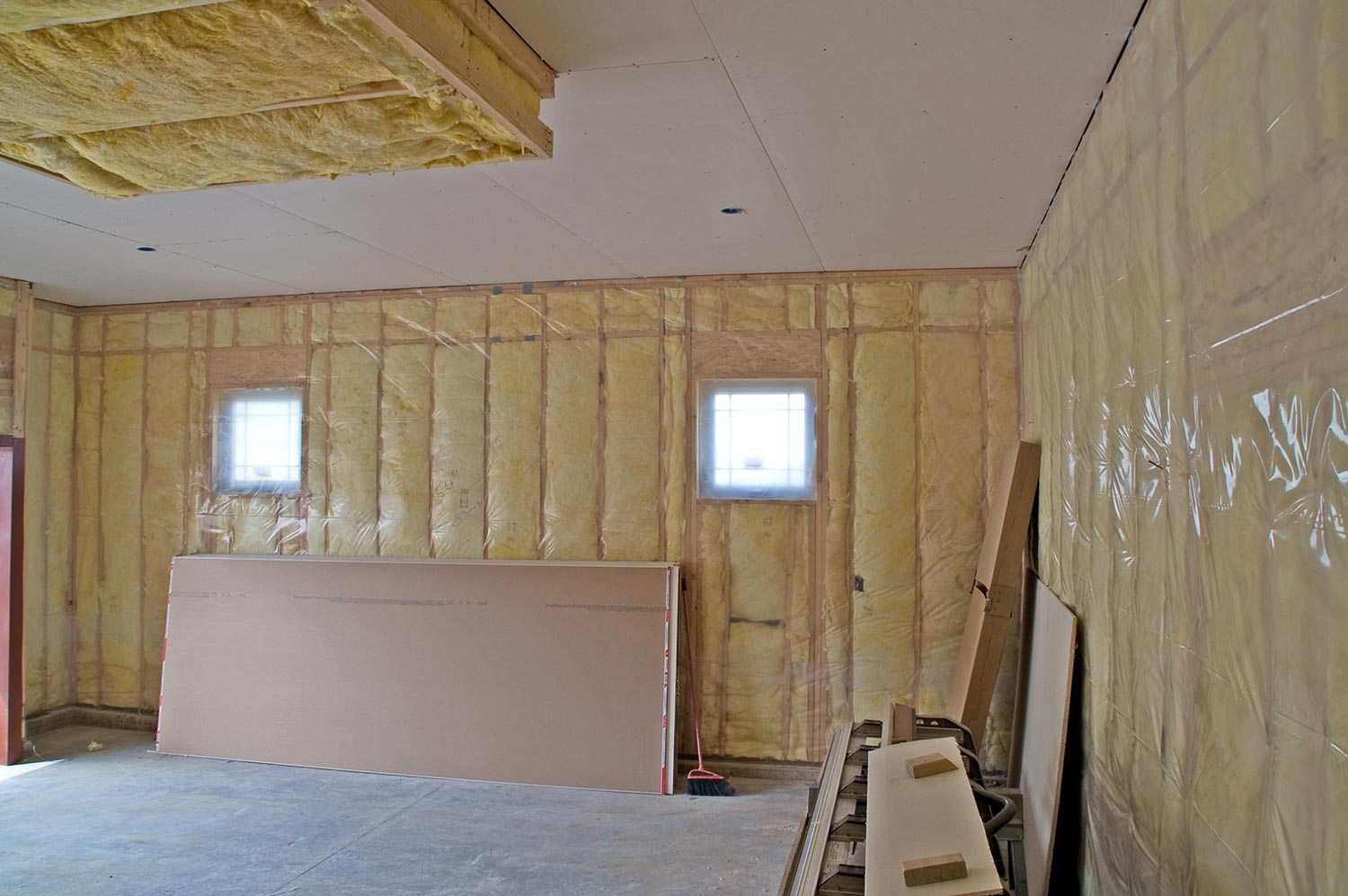The average garage is usually not insulated. However, if you plan to install an additional room above the garage, it is best to insulate it to help regulate the temperature inside of the room. But how do you go about this? We've looked into a few methods to get it done. In this post, we will go over them.
Here are the methods to insulate a bonus room above the garage:
- Add insulation to the room's floor
- Inspect and improve the HVAC system
- Add new insulation to the garage ceiling
- Change the insulation on the garage door
It's always a good idea to insulate rooms on the inside of your home. But if you have a room located on top of the garage, it may run into temperature regulation issues if it's not insulated. Let's take a closer look at maximizing an above garage bonus room's insulation to ensure that the temperature is properly regulated.

Methods to Insulate A Bonus Room Above The Garage
There are a few simple solutions to improve the heat retention in an above garage bonus room. Placing a large area rug or installing carpet in the room are affordable options. You can also hang insulating drapes inside the room to prevent heat from escaping.
If the room has tile flooring for wood planks, fabrics can add a bit of warmth and offer some form of weatherproofing. However, if the room is not insulated at all, these tricks won't add much temperature control.
To really make your above garage bonus room comfortable, you might consider ways to insulate the room and adjust the HVAC system to your preferred settings. Let's have a closer look at methods to insulate an above-garage room.
Add insulation to the floor of the room

This may be more challenging to do, but it's also an option. Adding insulation to the room's floor can help to prevent cold air from finding its way into the room. Note that this type of insulation won't be as thick as insulation applied to walls and ceilings, but it's generally less costly to install.
The insulation will go between the subfloor and the underlayment. It will typically require the expertise of a professional--though in some cases, you may be able to perform the task yourself. Common insulation materials used for the floor include polystyrene and synthetic cork.
Inspect and improve the HVAC System
A properly functioning HVAC system is essential to keep the room above the garage warm. For example, if you have central heating in the home, but it doesn't extend to the extra room, you may want to consider it.
Keep in mind that this will require the installation of additional registers in vent ducts. And it may be well worth it if you plan to spend a significant amount of time in the room or make it a rental unit.
You can also simply place a space heater inside the room, effectively circulating heat during the winter months. Another option would be to add an electric fireplace to the room --though this option would be more expensive.
Lastly, installing radiant floor heating is also an option. This involves installing flexible tubes beneath the floor instead of installing additional event ducts.
Add new insulation to the garage ceiling
You may want to consider upgrading the current insulation if the garage is over ten years old. If the garage is already insulated, take a look at the insulation to determine if you should replace it with insulation of a higher R-value.
For example, you may want to add spray foam insulation to the corners and cracks of the garage ceiling to keep any cold drafts from finding their way through the planks to the room. You can also consider using spray foam to insulate any small nooks and crannies in the garage ceiling. This can be added to any batt insulation installed in the room.
Change the insulation on the garage door
Another approach you can take to make the room warmer is to increase the R-value of the insulation on the garage door. The addition of a few batt rolls to the garage door can help keep the space warm during the winter.
Remember, the more you insulate your garage, the warmer the room above the garage will be. An R-value of anywhere from 8-12 is typically recommended for most garage doors. However, it's always best to check the local building codes for your area before adding any additional insulation to your house.
Do rooms above garages get hotter?
It's well-known that hot air rises to the top of a room while cold air gathers and then settles on the bottom. For this reason, you may notice that the room is hotter than other rooms in the summer. The insulation, ductwork, and air sealing can also affect this. To prevent the room from becoming hotter, you may want to consider applying an adequate thermal treatment.
Is it bad to live above a garage?
No, not necessarily. However, the rooms located above the garage can become health hazards if they are not installed and insulated properly. This is why there are home builder regulations and codes to follow when installing this type of room in your home. Let's take a look at the issues that homeowners can face with these types of rooms.
Temperature regulation
The room above a garage may experience temperature fluctuations in the winter and summer months. This usually happens when the room is not well-insulated.
It means that the room will typically be warmer than any other house room during the summer months and colder than other rooms during the winter months. Adding insulation to the garage ceiling, garage and room doors, and room walls can help to minimize this.
Dangerous Fume Seepage
Another thing that can be hazardous to anyone occupying an above garage room is the seepage of gas or other motor fumes into the room. Fumes such as carbon monoxide can rise from the garage through the windows or vent ducts and present respiratory hazards to its inhabitants. It's best to have a building inspector or licensed contractor inspect the garage and upper space before building.
How much warmer is an insulated garage?

On average, an insulated garage will be about 15 to 20 degrees warmer than outside temperatures. There are also additional benefits to insulating your garage. Let's take a look.
Lower energy costs
Depending on where you live, you may save a significant amount of money and energy costs after insulating your garage. This is especially true if you live in coastal such as the southwest or northern parts of the US, where extreme temperatures are typical.
Reduction in noise
A garage that has been converted to a room can have significant noise reduction after being insulated. The reduction can be up to 15 or 16 decibels. This could also mean you won't be interrupted by cars driving down the street or chatter from walking pedestrians.
If you live on the noisy block, it may be worth the extra money. Also, if you go with batt insulation, you can save additional money by simply installing it yourself instead of hiring a contractor. You can also install any spray foam insulation yourself, but take care to learn the proper procedure and wear personal protective equipment for the job.
Do I need a vapor barrier when insulating my garage?
It depends on your location, though most garages don't require a vapor barrier. This is because the amount of vapor that makes its way through the garage ceilings, walls, and floors isn't substantial enough to cause excessive moisture or damage to the structure.
However, it may be worth considering if you experience moisture issues in your garage due to your home's regional temperatures and humidity levels.
Do you need planning permission to insulate a garage?
It depends on the purpose of the room. If you plan to make the room habitable, this will typically require some planning from your local government.
If you plan to convert the garage into a rental unit, it will definitely require a professional inspection and license permits. These permits are necessary to ensure that the structure is safe for anyone occupying the room and that its setup is in-step with building codes created by the local government.
Wrapping Things Up
There are a few different methods that you can use to insulate the room above your garage. When considering the methods mentioned, be sure to consider the cost as well. For example, adding rugs and curtains may be less expensive than installing batt insulation or radiant floors. The best solution will vary depending on the size of the room and your regional weather conditions.
Before you go, be sure to check out our other posts:
